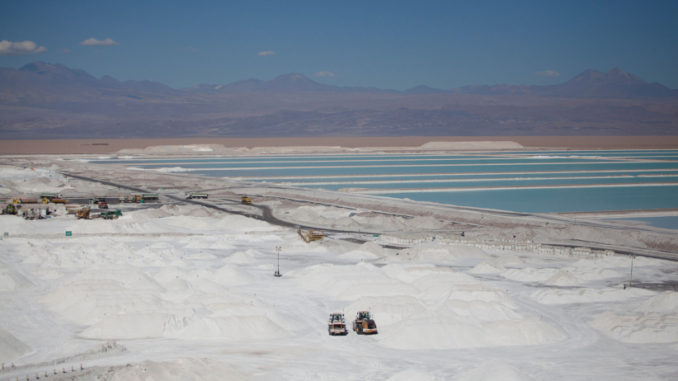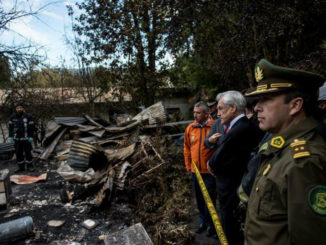
SANTIAGO – Chilean authorities will build a center for energy transition and advanced materials for the development of lithium in northern Antofagasta region, which holds 54% of the world’s lithium resources.
The executive vice president of the Chilean Corporation for the Promotion of Production (Corfo), Sebastián Sichel, announced last week that the Energy Transition Center and advanced materials for the development of lithium will be in Antofagasta for at least the next 10 years, “with the benefits that an institution of that magnitude brings to the region”.
“The resources of lithium for research and development remain in the region, our message is quite clear, we want to transform the Antofagasta region into a focus of development and scientific research of the first level,” Sichel added.
Entérate sobre el primer Centro de Transición Energética y materiales avanzados para el desarrollo del litio en la región de #Antofagasta presentado por el VPE #Corfo @sebastiansichel ? https://t.co/x31dJgTejk vía @24HorasTVN
— Corfo (@Corfo) June 29, 2018
He added that the technological Institute will be tendered in the next 90 days and is expected to be operational in 2019. The initial annual investment of this center will be about US$12 million, which are established in the contract between the state agency and the company North American Albemarle, and should be developed under three main axes: energy transition, solar energy and development of advanced materials for the lithium industry.
China’s Tianqi Lithium buys stake in Chile’s SQM for $4.07bn
During the press conference, Sichel said that “as a government, we are working on the academy and the private ones who present offers to administer this center. It is not a public-private initiative, it has to be led by them, we act by setting the bases and conditions of edge. We will have positive discrimination and positive evaluation indicators so that, in the offer, at least a private company and a regional academic institution are considered, but it does not limit it”.
Chile, which holds the largest known lithium reserves in the world (about 52%), has recently been overtaken by Australia as the world’s largest lithium producing nation boosted by record output at two major mines, according to data from United States Geological Survey (USGS).
The South American country only produced 14,100 tonnes of the white metal last year, which meant its market share dropped to 32.8% from 37.6% in 2016. Australia, instead, went from having 36.8% of the global market to 43.5% in the same period.
Both Chilean authorities and analysts believe the situation is only momentary, as the South American country’s development agency Corfo recently struck a deal with local producer SQM, which allows it to expand its production capacity of lithium from 48,000 tonnes to 70,000 tonnes this year, and then to 100,000 tonnes by 2019.
According to his estimates, Chile will likely recover its leading position in the lithium market by 2021, when total output is expected to reach at least 147,000 tonns of lithium carbonate equivalent (LCE).
Maricunga Project: Chile allows Canadian miner to extract and export lithium
The country also has ambitious plans to capitalize on its geological good fortune by building out a downstream processing and battery industry. All of Chile’s reserves are found in brines in underneath its vas salt flats located in the north.
Lithium is a key component needed in the making of batteries that power electric vehicles.



